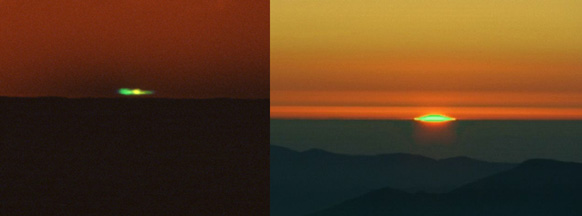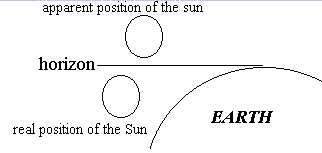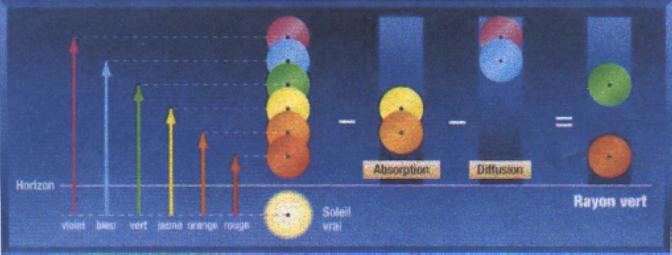Le coin des amatheurs de sciences version 2 
The sections of the site : The site  FORUM
FORUM  The space
The space  The genetics
The genetics  Medicine
Medicine  Physics
Physics  Tintin and science
Tintin and science  Ecology - Nuclear energy
Ecology - Nuclear energy  Mysteries of the history
Mysteries of the history  Humour
Humour  Diverse
Diverse
Le coin des amatheurs de sciences version 2 
The sections of the site : The site  FORUM
FORUM  The space
The space  The genetics
The genetics  Medicine
Medicine  Physics
Physics  Tintin and science
Tintin and science  Ecology - Nuclear energy
Ecology - Nuclear energy  Mysteries of the history
Mysteries of the history  Humour
Humour  Diverse
Diverse
| Physics |
|---|
| The green ray |
| Weightnessless in the elevator |
| The periodic table |
| Physics of the spaghetti |
| Albert Einstein |
| First stage to the invisibility |
 No, they are not the Martians who unload ! Sometimes, with to sleep or with rising of Sun (and not only with sleeping as it sometimes is read), one sees appearing a green gleam who can, according to conditions of lasting between a split second or ten seconds. According to Jules Verne, two in love which sees it is promised with a happy future. For others, it is only one optical illusion or an effect of our imagination. But of the photographs show that the phenomenon is real. Here is the explanation.
No, they are not the Martians who unload ! Sometimes, with to sleep or with rising of Sun (and not only with sleeping as it sometimes is read), one sees appearing a green gleam who can, according to conditions of lasting between a split second or ten seconds. According to Jules Verne, two in love which sees it is promised with a happy future. For others, it is only one optical illusion or an effect of our imagination. But of the photographs show that the phenomenon is real. Here is the explanation.
The refraction
The light is propagated in straight line. However, when the rays pass from a medium to another, they are refracted : they change direction. It's why a stick plunged in water seems broken. But the rays coming from the Sun cross the atmosphere. However the atmosphere is not a homogeneous medium: it is a complex mixture of vacuum, of steam, various gases... Thus the luminous rays which cross it are unceasingly refracted. They undergo a multitude of very light refractions, which causes to curve their trajectory. Admittedly, this curve is low and on our scale, one can regard the rays as a straight line. But the solar rays cross tens of kilometers (the atmosphere is a layer of 120 km - 75 miles). They thus are really curved. This has as a consequence that even if the Sun should not for any more be visible us, it is seen (phenomenon called delay with laying down Sun) :

Moreover, the phenomenon of refraction is different according to the wavelength from a luminous ray, i.e. according to its color. The visible rays have a wavelength ranging between 0,4 micrometer (purple) and 0,8 micronmeter (red). Thus, the refraction separates the various colors which make the white light (it is the same phenomenon as the arc sky) : the Sun that we see is a succession of coloured discs placed the ones with the top of the others and of which the provision upwards is : red, orange, yellow, green, blue, purple. But as these discs are not very shifted and than their light intensity is very strong, we don't distinguish them with the eye but let us superimpose we them. We see a white or yellow Sun thus. And, in normal time, at the time when the Sun seems to us to lie down, we see only the highest color : the purple one. To see the green ray, two phenomena thus should be added: absorption and diffusion.
Absorption
Even if the light can cross water, this one absorbs the light slightly. They is for example for that that the more one is inserted in the underwater depths, the less there is light.
Of course like any optical phenomenon, absorption depends on the wavelength of the ray. In fact, absorption particularly relates to the yellow and oranges rays : the underwater depths appear blue dark.
However the atmosphere contains water molecules in the form of vapor. Thus, the Sun which appears to us is a superposition of circles whose colors are upwards : red, green, blue, purple. But with laying down Sun, should still see us a purple ray! It is there that the diffusion intervenes.
Diffusion
The luminous rays, when they cross the atmosphere, are scattered in all the directions (still a phenomenon of refraction). However the diffusion is more important for the shorter wavelengths, i.e. blue and the purple one. Thus, these two colors are largely scattered while the red and the green preserve their trajectory. That explains also the blue color of the sky.
Thus, very few the blue and purple rays emitted by the Sun arrive in our eye. One must thus « eliminate » these two discs. It remains upwards : red and green. Thus, when the Sun lies down, the last ray which we see is green.
Synthesis
One can summarize the green ray with the following diagram :

Conditions of observation of the green ray
In all the cases, this phenomenon generally appears under high latitudes, because the Sun rises and lie down more slowly in these areas. Moreover, one is likely more to observe this phenomenon at a place where the horizon is rather flat. It is above the ocean that the green ray is more the Net because there is less of dust in suspension (thus the long green wavelength has more chance to go to our eye). If to lay down it Sun that you to be admiring is rather red, the chances will be mean to see the green ray there ; on the other hand, if it is rather yellow, then supervise well. Lastly, of the observers would have seen green rays after eclipses, but no explanation was still advanced.
Another color
A red ray is also sometimes observable when the Sun, while lying down, passes behind a cloudy band and arises below, just before its lower edge doesn't disappear under the horizon. It is however less obvious, because one is accustomed to see one laying down red Sun, with the result that the red ray does not strike us...